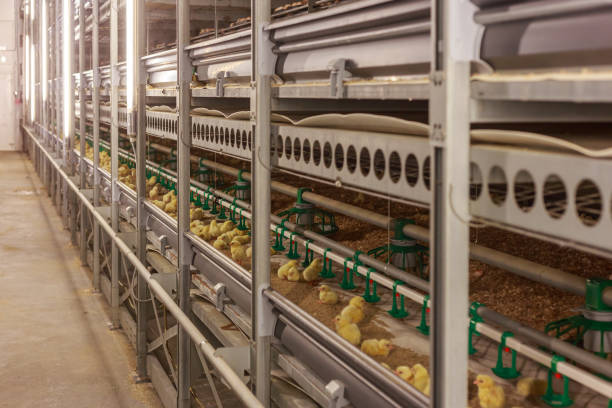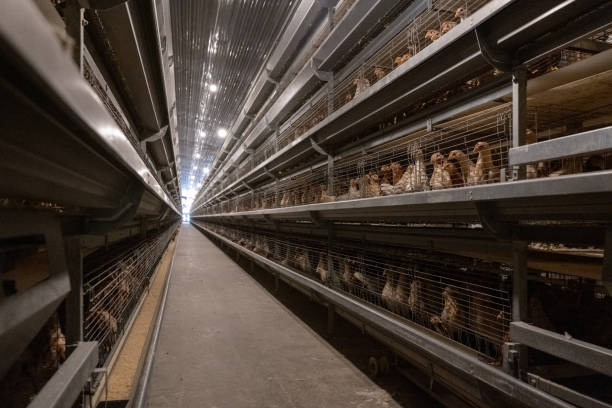
Efficient Layer Poultry Farming Solutions in Kenya
Efficient Layer Poultry Farming Solutions in Kenya
Raising laying hens in Kenya has become more than just a backyard hobby—it’s turning into a profitable and sustainable business for many farmers across the country. With rising demand for eggs in both urban and rural areas, poultry farming is no longer just about food; it’s about income, job creation, and food security. But to truly capitalize on this opportunity, farmers need efficient, modern, and reliable layer poultry farming solutions. That’s where Livi Machinery from Zhengzhou comes in—providing top-quality systems designed specifically for African climates and farm structures.
At Livi, we believe that success in layer farming doesn’t come from effort alone—it comes from using the right tools. Our automated chicken cages, feeding systems, egg collection mechanisms, and ventilation designs help Kenyan farmers run smarter, cleaner, and more productive operations. Unlike traditional free-range or deep-litter methods that are labor-intensive and prone to disease outbreaks, our modern cage systems reduce workload, minimize feed waste, and keep birds healthier and more productive over their laying cycle. Whether you’re running a small 500-bird setup or scaling up to 10,000 layers, our modular designs allow flexibility and room for growth without major infrastructure changes.
Why Modern Layer Cages Make a Difference
One of the biggest challenges in Kenyan poultry farming is maintaining bird health while maximizing egg output. Diseases like Newcastle and coccidiosis spread quickly in uncontrolled environments, leading to high mortality and financial loss. Open-floor systems often expose birds to parasites, damp bedding, and wild birds—all carriers of dangerous infections. By switching to modern layer poultry cages, farmers can significantly reduce these risks.
Our galvanized steel cages are built to last over 15 years, resist rust even in humid conditions, and are easy to clean. Each cage system includes automatic feeding lines that distribute feed evenly, eliminating competition among hens and reducing waste by up to 30%. The nipple drinking system ensures clean water delivery while preventing spillage and bacterial growth. Most importantly, our tiered cage design keeps birds off the manure belt, which means healthier feet, fewer diseases, and improved feather condition. All these factors lead to better egg quality and higher weekly lay rates—something every commercial farmer wants.
And it’s not just about keeping chickens safe—it’s also about making life easier for you. Imagine collecting eggs without bending down row after row, or adjusting ventilation with a simple controller instead of manually opening windows. Our smart control panels let you manage lighting, temperature, and fans remotely, even from your phone if needed. These aren’t luxuries—they’re necessities for long-term profitability.
Smart Design Meets Local Needs
We know Kenya isn’t Europe or Asia—the weather, power supply, and access to spare parts all differ greatly. That’s why we don’t ship generic equipment. Instead, we customize each project based on location, flock size, climate, and available resources. For example, farms in hotter regions like Makueni or Baringo get enhanced cooling systems with tunnel ventilation and evaporative pads, while those in cooler highlands like Nakuru may use simpler natural airflow setups.
Power instability is another common issue. To address this, our systems are designed to run efficiently on solar energy or hybrid setups. Many of our clients now pair our poultry houses with solar panels, reducing operating costs and carbon footprint. We also train local technicians so repairs and maintenance can be handled quickly—even between Nairobi and Mombasa, delays shouldn’t stop your production.
Another key feature is scalability. You might start with one house today, but as demand grows, you’ll want to expand. Our plug-and-play modules make adding new units seamless. No need to redesign everything from scratch. Just connect the next unit, calibrate the system, and keep going. This kind of forward-thinking design helps Kenyan agri-entrepreneurs grow steadily without costly mistakes.
From Planning to Full Operation: Your Partner Every Step of the Way
Starting or upgrading a layer farm involves more than just buying equipment—it requires smart planning, the right layout, proper biosecurity zones, waste management, and staff training. At Livi, we offer full turnkey solutions. That means we help you choose the best site, design the poultry house structure, install the machinery, train your team, and support you during initial operation.

Before anything ships, we send engineers to assess local conditions if needed, or work closely via video calls and satellite maps. Then we create a customized plan complete with 3D layouts, material list, wiring diagrams, and timelines. Once production begins at our factory in Zhengzhou, we keep you updated with progress photos and testing videos. After arrival in Mombasa port, our network of partners handles customs clearance and transport to your farm. Installation takes days, not weeks, and our experts stay until everything runs smoothly.
But our relationship doesn’t end there. We provide ongoing technical support through WhatsApp, email, or video call. Need a broken part replaced? We keep inventory in regional hubs so replacements arrive fast. Want to upgrade automation? We can retrofit most systems later. This level of service has made us trusted partners across East Africa—from family-run farms to large co-operatives supported by government programs.
Ready to Build a Smarter Layer Farm?
If you’re serious about making your poultry venture more efficient, profitable, and future-ready, now is the time to invest in modern technology. Thousands of farmers worldwide have already boosted their yields and cut losses with Livi’s layer farming systems—and Kenyan producers are next in line to benefit. Whether you’re just starting out or looking to replace outdated sheds, we’re here to help you succeed.

Don’t wait for the next disease outbreak or drop in egg prices to realize the value of efficiency. Contact us today with your farm size, location, and goals—we’ll send you a free consultation and detailed proposal tailored to your needs. Let’s build your dream farm together.
Frequently Asked Questions
What types of layer cage systems do you offer?
We provide three-tier and four-tier A-frame cage systems suitable for small, medium, and large farms. Options include manual or automatic manure removal, egg collection trays, and fully automated feeding and watering setups.
Can your equipment handle Kenya’s hot climate?
Absolutely. Our systems are designed with heat stress in mind. We include tunnel ventilation, cooling pads, roof insulation, and shade netting to ensure optimal temperatures even in dry, hot areas.
How much space does a 10,000-bird layer farm need?
A fully equipped house for 10,000 layers typically requires around 700–800 square meters, including space for feed storage, egg collection, and technician passage. We optimize layouts for maximum density without compromising welfare.

Is installation included in your package?
Yes, professional installation by trained technicians is part of our turnkey service. We send specialists who guide local workers through assembly and machine calibration.
Do you work with financing organizations or cooperatives?
Yes, we collaborate with agricultural development agencies, banks, and cooperative groups offering group purchasing options and payment plans to ease upfront investment.
How long do the cages last?
Our galvanized metal cages last over 15 years under normal use. They resist corrosion, warping, and wear—even in dusty or humid conditions.
Can I integrate solar power with your systems?
Definitely. Our control boxes, fans, feeders, and lights are compatible with solar inverters and battery backups. We recommend solar setups for remote locations or unstable grids.
Are spare parts easily available in Kenya?
We maintain spare parts stock in East Africa, including Nairobi and Mombasa. Common components like belts, motors, and nozzles can be delivered within 2–3 days.
Do you offer training for farm workers?
Yes, we provide on-site training covering daily operations, safety checks, cleaning routines, and emergency troubleshooting. Materials are available in English and Swahili.
How soon can I get the equipment after ordering?
Lead time is typically 25–35 days from order confirmation, depending on customization. Shipping from China to Mombasa takes about 20–25 days by sea. We coordinate logistics closely to avoid delays.
